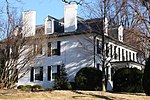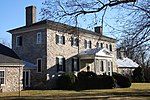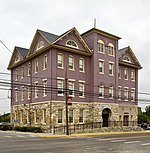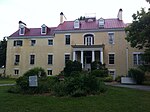Robert Worthington House
Colonial architecture in West VirginiaEastern Panhandle Registered Historic Place stubsGeorgian architecture in West VirginiaHouses completed in 1735Houses completed in 1781 ... and 3 more
Houses in Jefferson County, West VirginiaHouses on the National Register of Historic Places in West VirginiaNational Register of Historic Places in Jefferson County, West Virginia
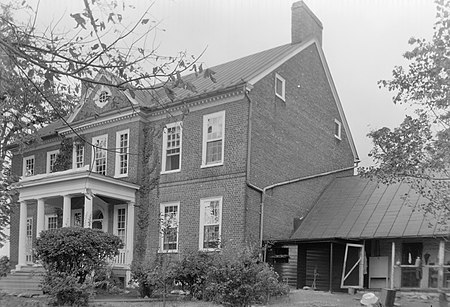
The Robert Worthington House, also known as Piedmont and Quarry Banks, is an historic house located near Charles Town, West Virginia. The main house was constructed as an addition in 1784 to the original structure, which dates to circa 1735, built by Robert Worthington, who called the house "Quarry Banks - New Style" after his original home, "Quarry Banks" in England. Worthington's grandson, Thomas Worthington, eventually became the sixth governor of Ohio. The Georgian style addition was built by Dr. John Briscoe. The house remains in the Briscoe family.
Excerpt from the Wikipedia article Robert Worthington House (License: CC BY-SA 3.0, Authors, Images).Robert Worthington House
Piedmont Drive,
Geographical coordinates (GPS) Address Nearby Places Show on map
Geographical coordinates (GPS)
| Latitude | Longitude |
|---|---|
| N 39.296111111111 ° | E -77.889722222222 ° |
Address
Piedmont Drive 264
25414
West Virginia, United States
Open on Google Maps
